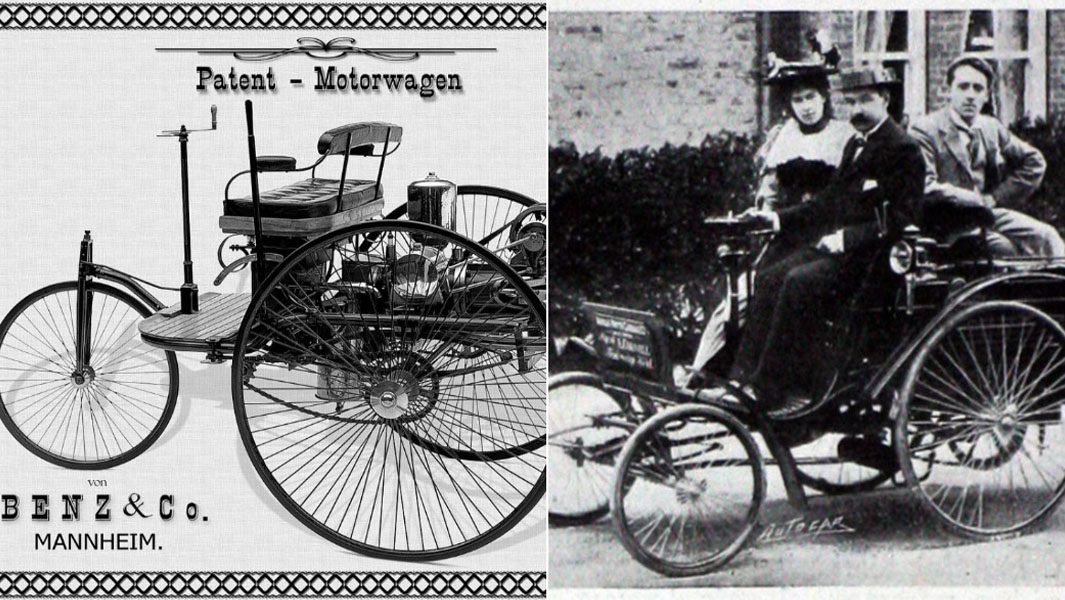Bizarre story of the horseless carriage charged with first speeding offence

Is driving at eight miles per hour enough to gain a speeding offence? Apparently, it is!
It was the year 1896, exactly 128 years ago, when a British policeman found himself on his assigned bike, racing after a car for five miles (a little over eight km).
He had just witnessed something unprecedented.
Today speeding is a common offence, but it didn't exist before 28 January 1896: the day that marked the very first speeding offence in history.

The first recorded speeding fine in history was given to a man named Walter Arnold in Paddock Wood, Kent, England.
A motor enthusiast and pioneer of driving, that day Arnold was driving a Benz Patent-Motorwagen: produced in 1886, the Benz is considered as one of the very first models of cars in the world.
Aboard his vehicle, he had sped up to 8 mph (the equivalent of 13 km/h) in a 2 mph (3 km/h) zone.
That was four times the speed limit!
The law also dictated that a flag-bearer should have been in front of the car with a red flag at all times, presumably to alert people of the vehicle, but Arnold failed to meet that requirement.

The offender was chased by a policeman who had witnessed the uncanny crime during his usual patrolling.
Once he surpassed the shock, the man hopped on his office-assigned bike and relentlessly chased the Benz, pursuing the unlawful driver for a total of five miles (roughly eight km) before Arnold was finally caught and arrested.
When Arnold was promptly brought in front of the local magistrate a couple of days after the crime, he was accused of four charges - or, as described by the local newspaper, “informations”.
As reported in the 30 January issue of the London Daily News, Arnold was accused of:
- using a locomotive without a horse on a public road
- allowing the vehicle to be operated by fewer than three persons
- recklessly surpassing the limit of two miles per hour
- failing to display his name and address on the locomotive, which would be today's equivalent of driving without a plate or a license
Arnold’s defendant argued that the man was not driving a locomotive, trying to untangle his client from the unprecedented situation by insisting that a never-seen-before felony required new legislation.
Sadly for the man, the judge didn’t agree. Although it was agreed that Arnold was driving not a locomotive but a "horseless carriage", the reckless driver was found guilty of all four counts.
He was fined with £4.7s in total, of which 10 shillings was for the speeding charge. Each other fine amounted to one shilling plus costs.
In today’s money, a shilling would be the equivalent of 1/20th of a pound (around seven or eight cents for the US).

But that wasn’t all, as Arnold also had to forfeit his license for 28 days.
He officially became the first British person to receive a speeding ticket (although he was certainly not the last!) and the first person to be convicted of speeding under the Locomotive Act of 1865, also commonly known as the Red Flag Act.
The act required all motor vehicles to have a crew of three, one of whom had to walk in front of the vehicle waving a red flag to warn other road users.
Arnold's unwilling record partially contributed to amending the regulations in 1896, when the speed limit was raised to 14 mph (23 km/h) and the flag-bearer was no longer required.
As time went on, Arnold’s love for motors and cars didn’t fade because of a – quite literal – bump in the road.
On the contrary, he found smart ways to use the publicity: soon, the man grew to become one of the very first car dealers and even produced his vehicles on the base of the Benz. With a partner, the pioneer even produced 12 cars from 1896 until the late summer of 1898.
If you love watching records being broken you should check out our Records Weekly series on YouTube...
Want more? Follow us on Google News and across our social media channels to stay up-to-date with all things Guinness World Records! You can find us on Facebook, Twitter/X, Instagram, Threads, TikTok, LinkedIn, and Snapchat Discover.
Don't forget to check out our videos on YouTube and become part of our group chat by following the Guinness World Records WhatsApp channel.
Still not had enough? Click here to buy our latest book, filled to the brim with stories about our amazing record breakers.


